
Vi KronobergsVävare
The profile challenge 2012
Some of our pages are translated to English:
- rackel weave, or three-treadle weave
- blanket brushing
- winding a warp with a warping glove
- In the bower (exhibition '05)
- Bags
- Bags exhibition '10
- Rugs
- Index with (some) translations
- Links
-
How it began
(use "back" button to return here) - January
- February
- March
- May
- July
- August
- September
- Nov-Dec
"Rackelbindningar" and other three-treadle weaves
First some definitions:(note for American readers: all drafts written for sinking shed. The structure(s) are completely reversible, but the colour-and-weave effects will be reversed.)
All warps float over three, under one weft, either on the right side or on the reverse.

This version is somewhat firmer, as the warp floats are only over two, under one weft.
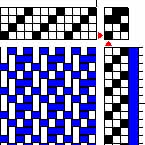
At the bottom of the page there are comments and suggestions from members and public.
The sample that got us interested in the first place - we thought it was a double weave, as it was so very different on the two sides. We had to analyze it to find we were wrong: it was a colour-and-weave rackel weave.
This is what it looks like:

When one side looks like this...
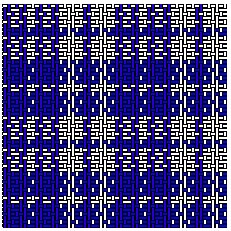
... the other looks like this

Marianne's sample is a little different - a variation on six shafts. The classical rackel-stripes are totally "opposite", it is impossible to see the "other" colour on the "one" side.
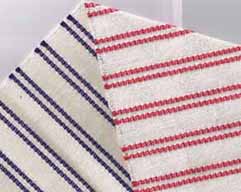
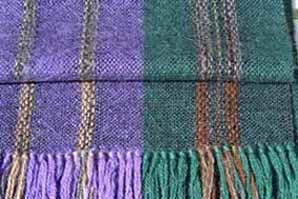
To the right is a portion of the drawdown with right side at top, reverse at bottom.
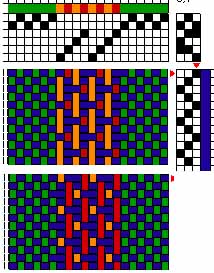
In Nina von Engeström's Praktisk vävbok (first ed 1899, facsimile 1981 - note for Am readers: this might be in the Worst book (Foot power weaving, IIRC?), most of his drafts come from this book) she found a variant:
BUT: is this rackel weave? It employs only three treadles, but... It is both enlarged and has the treadles in a different order, and the result will be looser with warp floats over two picks and weft floats over four ends.
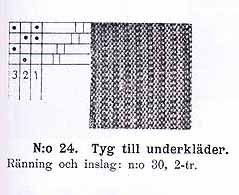
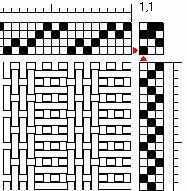
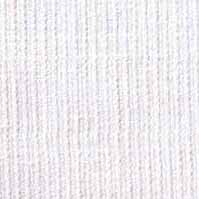
When looking closely it can be seen that this is a variation of our rackel weave, with two blocks in both tie-up and treadling. Can we still call this rackel weave, even though it is woven with four treadles?
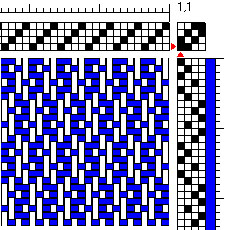
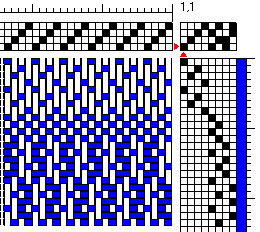
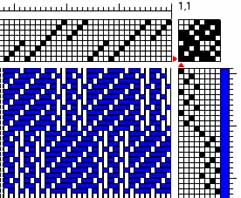
New September 2010:
Yet another variant of our old rackel weave?
Below left as written, below right with threading and treadling shuffled to look more familiar.
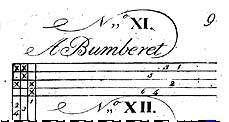

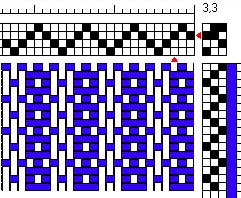
Woven samples
Kerstin tried Persson nr 19. Warp (blue) and weft (purple) mercerised cotton 20/2, 14 ends/cm (approx 35 epi). The result is a very nice cloth, suitable for blouses.
Top right side (according to draft), bottom reverse side.



One side...
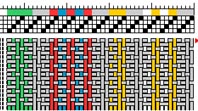
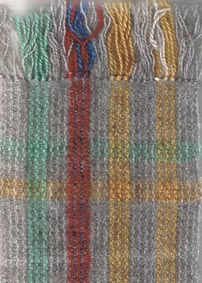
... and the other
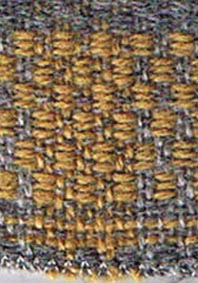
Nr 8 - dotted in wool. Yellow weft for "pattern", grey for tabby picks.
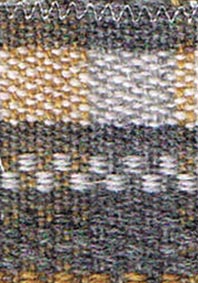
Nr 10. Cross-striped it is! Both samples from Elsa.
Some comments:
- Marianne has read a paper from Göteborgs universitet, where it is suggested the name ("rackelbindning") comes from Värmland
- Marianne has a suggestion for the meaning of the word [...]
- Further, Marianne is of the opinion that "rackelbindning" can only be used for the topmost structure. The rest ought to be called something else - three-treadle weaves?
More comments welcome!
www.riksvav.se/kronobergsvav/